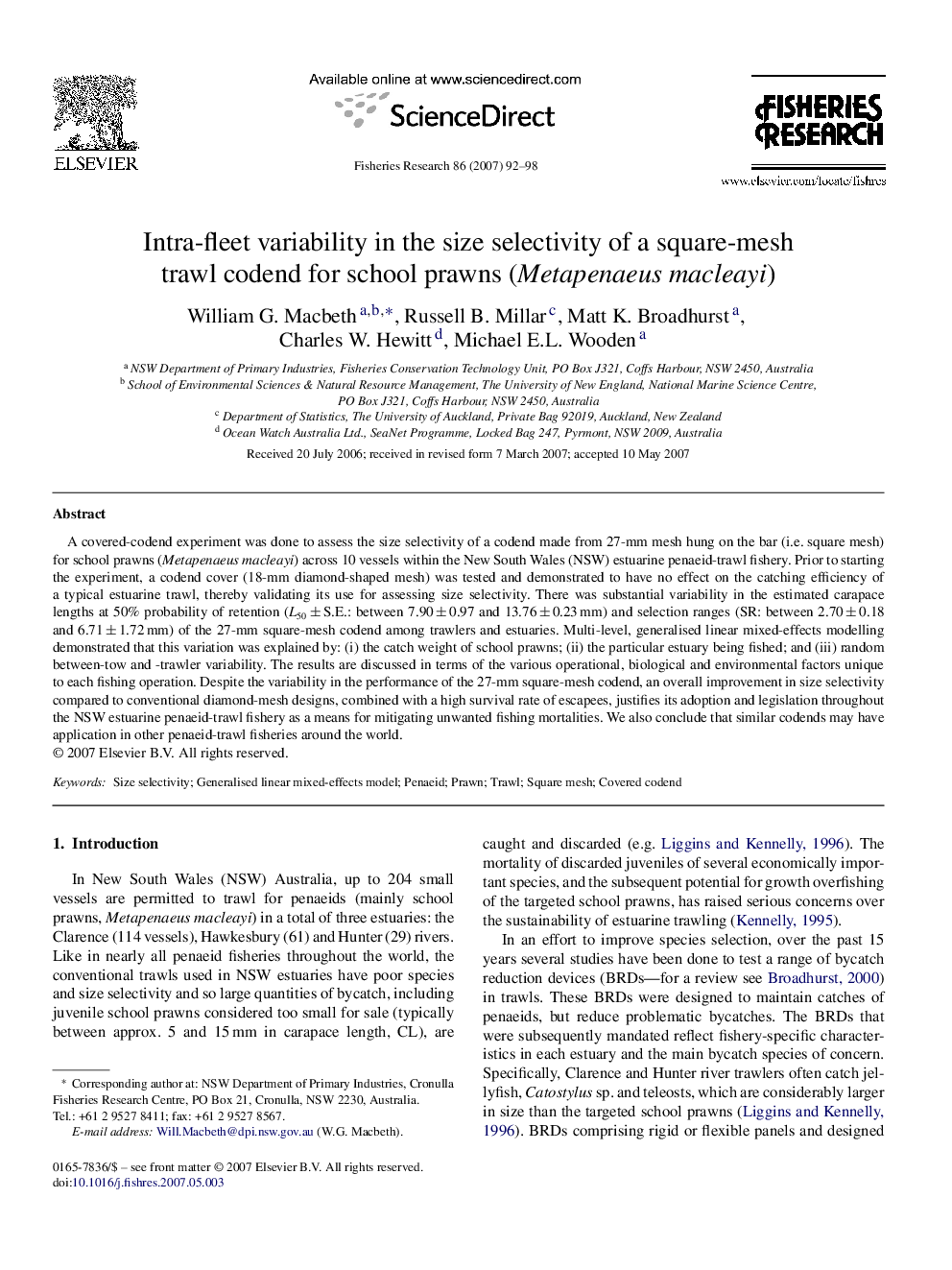| Article ID | Journal | Published Year | Pages | File Type |
|---|---|---|---|---|
| 4544659 | Fisheries Research | 2007 | 7 Pages |
A covered-codend experiment was done to assess the size selectivity of a codend made from 27-mm mesh hung on the bar (i.e. square mesh) for school prawns (Metapenaeus macleayi) across 10 vessels within the New South Wales (NSW) estuarine penaeid-trawl fishery. Prior to starting the experiment, a codend cover (18-mm diamond-shaped mesh) was tested and demonstrated to have no effect on the catching efficiency of a typical estuarine trawl, thereby validating its use for assessing size selectivity. There was substantial variability in the estimated carapace lengths at 50% probability of retention (L50 ± S.E.: between 7.90 ± 0.97 and 13.76 ± 0.23 mm) and selection ranges (SR: between 2.70 ± 0.18 and 6.71 ± 1.72 mm) of the 27-mm square-mesh codend among trawlers and estuaries. Multi-level, generalised linear mixed-effects modelling demonstrated that this variation was explained by: (i) the catch weight of school prawns; (ii) the particular estuary being fished; and (iii) random between-tow and -trawler variability. The results are discussed in terms of the various operational, biological and environmental factors unique to each fishing operation. Despite the variability in the performance of the 27-mm square-mesh codend, an overall improvement in size selectivity compared to conventional diamond-mesh designs, combined with a high survival rate of escapees, justifies its adoption and legislation throughout the NSW estuarine penaeid-trawl fishery as a means for mitigating unwanted fishing mortalities. We also conclude that similar codends may have application in other penaeid-trawl fisheries around the world.
